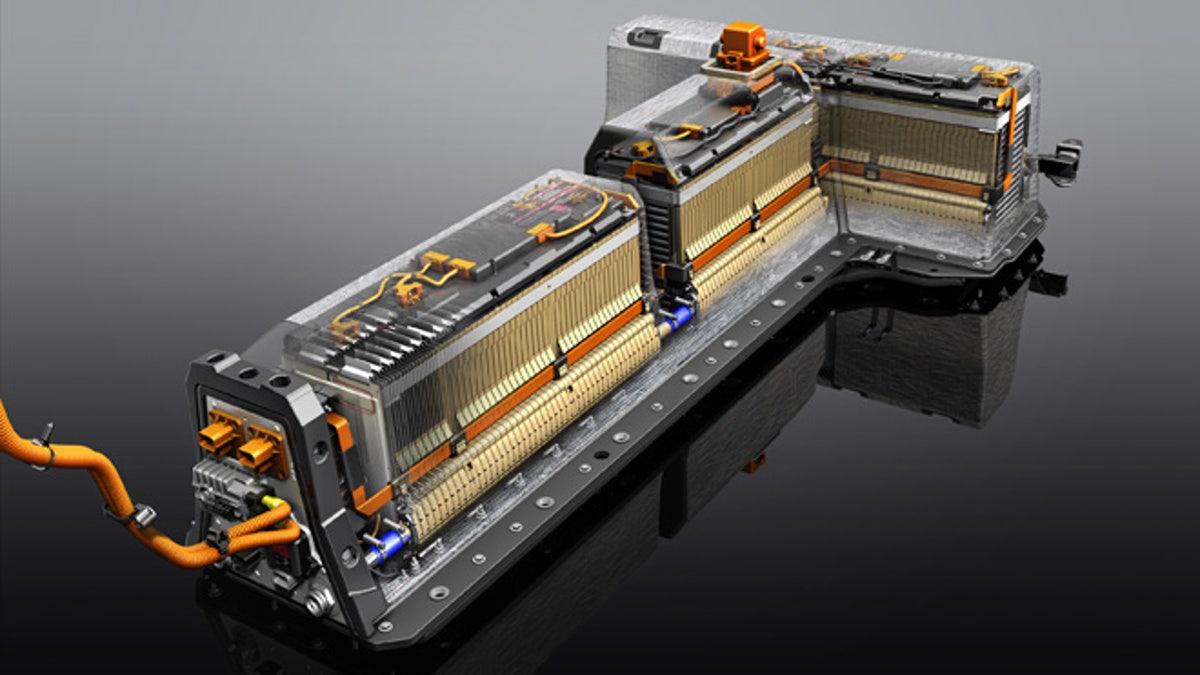
The Chevrolet Volt's 16 kWh battery pack (Chevrolet)
Whether you like it or not, you are an investor in the electric vehicle (EV) battery of tomorrow.
Late last week, the Department of Energy announced plans to spend $120 million to establish a major battery research center at the Argonne National Lab outside of Chicago. The stated goal: to create a new “Manhattan Project” that will develop an EV battery in the next five years that lasts five times as long and costs one-fifth as much as current EV batteries.
And they say it’s all in the interest of national security.
The Joint Center for Energy Storage Research (JCESR) will become a think tank for multiple government entities like the Lawrence Berkeley National Laboratory in California, and the Pacific Northwest National Laboratory in Washington, in addition to private companies like Dow Chemical and Johnson Controls. Even General Motors is an affiliate – and likely future licensee of the technology.
“The taxpayer is an investor, so what can we do that pays the investor back? The answer is security – to do our best to use energy inside the boundaries on our soil,” says Jeff Chamberlain, the deputy for development and demonstration at JCESR. Chamberlain says the U.S. imports a billion gallons of oil per day. But if even 5 percent of drivers switched to EVs, that could mean $100 billion in battery purchases that would be powered largely by domestically produced energy.
“The Chevy Volt sticker price is $40,000. If we can have a battery with five times as much energy [as the one in the Volt] at even a third of the cost, then those vehicles become cost competitive with gas vehicles. If they are competitive on the lot, and they can save on costs to drive, people will buy them,” says Chamberlain.
The plug-in hybrid Volt has a battery-powered range of 38 miles, while most of the all-electric cars on sale today can go less than 100 miles per charge. Only the Tesla Model S can come close to the range of liquid fueled cars, travelling up to 265 miles between charges, but at a cost of $77,400, which is more than twice the average price of a new car today.
“Batteries have made their way into every form of our life,” adds Amy Francetic, an executive director of the Clean Energy Trust based in Chicago, a business accelerator that helps transfer government research to industry. “Any time [something] is critical to our way of life, or an advancement of industry, it should be the role of the US government. It is hard to make those advancements without the US government."
Still, experts in the automotive industry and materials science research are wondering why the US government is sponsoring such a massive research effort.
“This is the definition of a money hole,” says Rob Enderle, an analyst who has studied battery innovations. “They aren't going to the Moon, they are just making something that exists better and setting goals that can't be achieved in a reasonable time.”
Enderle says a better plan would be to focus on a specific goal, such as figuring out how to improve the energy grid for charging a growing number of EVs, or to invent a new wireless charging technology so the electric cars of the future don’t have to literally plug-in.
Ozzie Zehner, a visiting scholar at UC Berkeley STSC and the author of "Green Illusions," says the main problem with funding government labs for electric car research is that the U.S. should look for entirely different green initiatives to fund, and to stay out of the EV market.
“Both the National Academies and, more recently, the Congressional Budget Office, have found no benefit to the environment from subsidizing electric cars,” Zehner says, arguing that taxpayer money could be wasted.
Chamberlain counters the argument about misplaced funds by pointing out that even the largest U.S. companies do not have massive supercomputers, linear accelerator labs (like the one in Stanford), or a staff of what will eventually become about 120 researchers at JCESR.
The only other non-government entity to have that many materials science researchers? The Toyota Motor Company, which likely has a staff of about 100 researchers in Japan developing new battery technologies for imports, says Chamberlain. The company’s Prius hybrid is the best-selling electrified car of all time.
Francetic says that the automakers do have research teams dedicated to developing new battery technologies for EVs, but not at the level of basic physics – which requires a team of materials science experts and cooperation between government labs and private industry. “Physicists are behind inventing battery science, manufacturers are behind manufacturing,” she says.
Toyota, Ford and GM declined to comment on the new research center. “We're not in a position to comment about this yet,” says Alan Hall, a spokesperson for Ford.